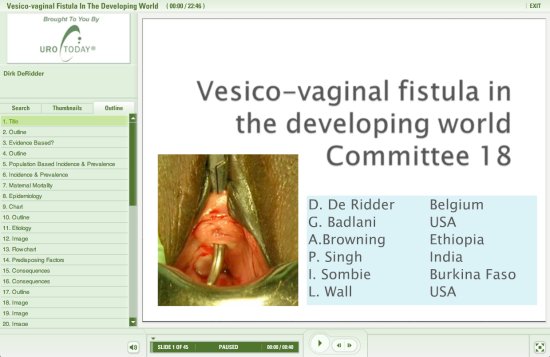Presented by Dirk DeRidder, MD, et al., at the Fourth International Consultation on Incontinence (ICI) - July 5 - 8, 2008. Palais des Congres, Paris, France.
Vesico-Vaginal Fistula in the Developing World - View Multimedia Presentation

View the Complete Lecture Series
will be published in textbook format at a future date.



| ||
 |



